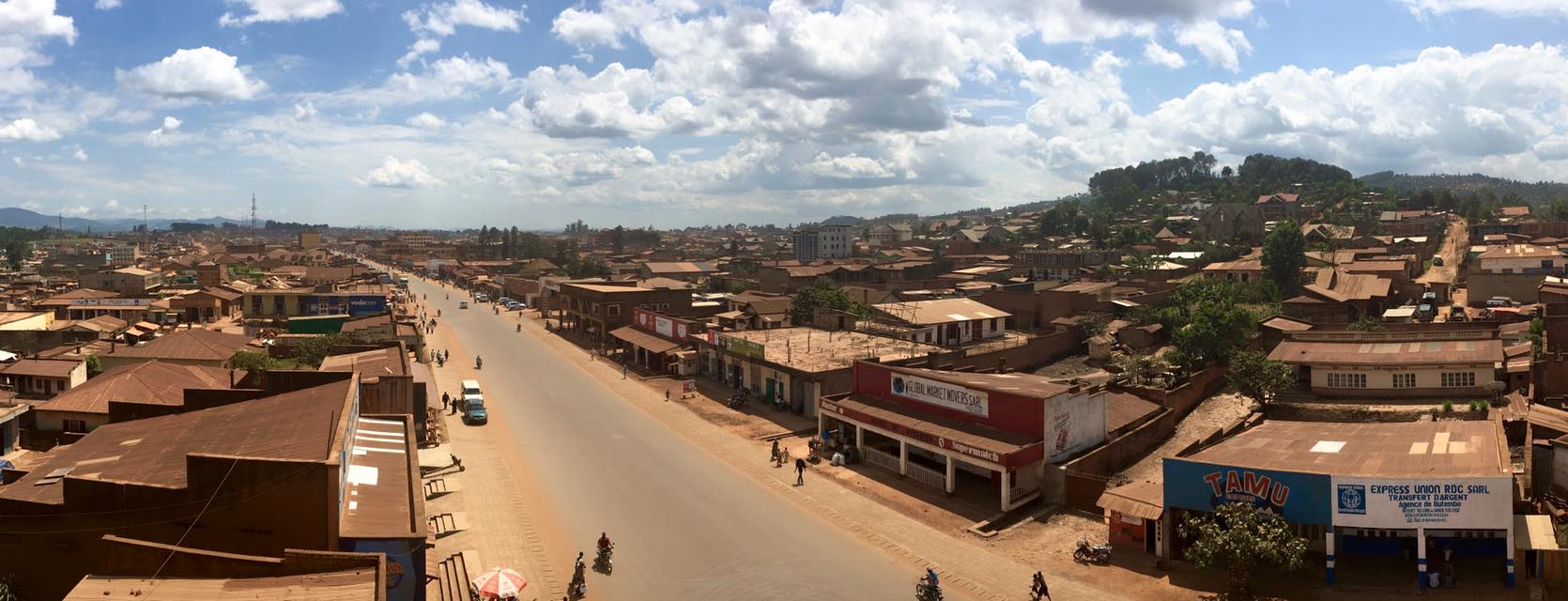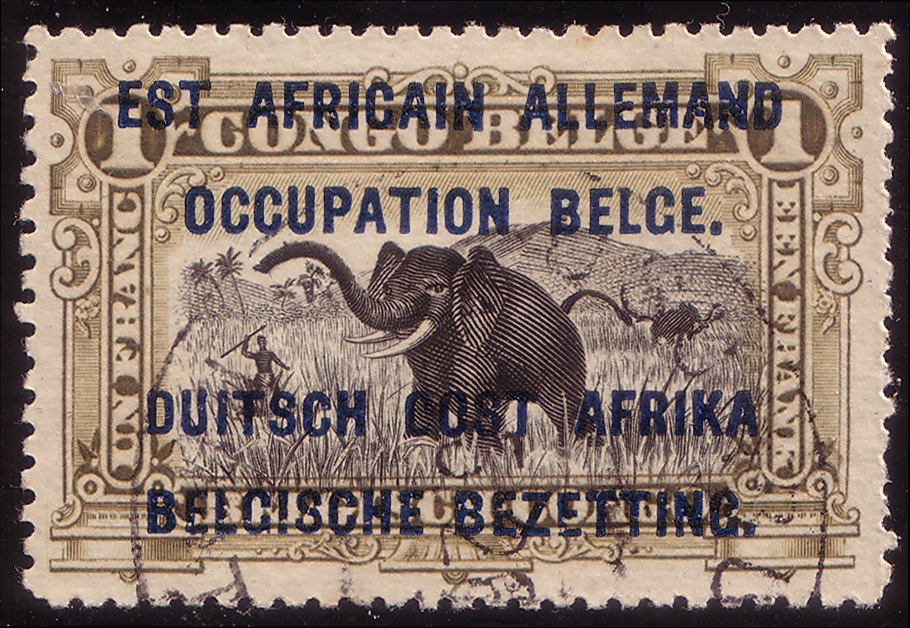|
Compagnie Minière Des Grands-Lacs
The ''Compagnie Minière des Grands-Lacs'' (MGL) was a Belgian mining company active in the Belgian Congo and then in the Democratic Republic of the Congo. It was established in 1923 and in 1976 merged with other companies into the ''Société Minière et Industrielle du Kivu'' (SOMINKI). The company was active in the eastern regions of Maniema and Kivu, with its main center at Kamituga in today's South Kivu. It extracted gold, tin and other minerals. Foundation The Empain group was an informal combination of companies created from 1881 onwards by Baron Édouard Empain (1852–1929). In 1902 Empain founded the '' Compagnie des Chemins de Fer du Congo Supérieur aux Grands Lacs Africains'' (CFL) with a capital of 25 million francs. It had a concession to build railways in the east of the colony between the Congo River and lakes such as Lake Edward and Lake Tanganyika. Gold deposits were found in the 1920s in the Twangiza-Namoya gold belt, which stretches from South Kivu into Mani ... [...More Info...] [...Related Items...] OR: [Wikipedia] [Google] [Baidu] |
Belgian Congo
The Belgian Congo (french: Congo belge, ; nl, Belgisch-Congo) was a Belgian colony in Central Africa from 1908 until independence in 1960. The former colony adopted its present name, the Democratic Republic of the Congo (DRC), in 1964. Colonial rule in the Congo began in the late 19th century. King Leopold II of the Belgians attempted to persuade the Belgian government to support colonial expansion around the then-largely unexploited Congo Basin. Their ambivalence resulted in Leopold's establishing a colony himself. With support from a number of Western countries, Leopold achieved international recognition of the Congo Free State in 1885. By the turn of the century, the violence used by Free State officials against indigenous Congolese and a ruthless system of economic exploitation led to intense diplomatic pressure on Belgium to take official control of the country, which it did by creating the Belgian Congo in 1908. Belgian rule in the Congo was based on the "colonial tr ... [...More Info...] [...Related Items...] OR: [Wikipedia] [Google] [Baidu] |
Union Minière Du Haut-Katanga
The ''Union Minière du Haut-Katanga'' (French language, French; literally "Mining Union of Upper-Katanga") was a Belgium, Belgian mining company (with minority British share) which controlled and operated the mining industry in the copperbelt region in the modern-day Democratic Republic of the Congo between 1906 and 1966. Created in 1906, the UMHK was founded as a joint venture of the Belgian Compagnie du Katanga, the Belgian Comité Spécial du Katanga and the British Tanganyika Concessions. The Compagnie du Katanga was a subsidiary of the Compagnie du Congo pour le Commerce et l'Industrie (CCCI), which was controlled by the countrhy's largest conglomerate, the Société Générale de Belgique. With the support of the Congo Free State, colonial state, the company was allocated a concession in Katanga Province, Katanga. Its primary product was copper, but it also produced tin, cobalt, radium, uranium, zinc, cadmium, germanium, manganese, silver, and gold. UMHK was part of a c ... [...More Info...] [...Related Items...] OR: [Wikipedia] [Google] [Baidu] |
Butembo
Butembo is a city in North Kivu, in the north eastern Democratic Republic of Congo, lying west of the Virunga National Park. The city is an important commercial centre with large markets, a cathedral, multiple large hospitals, and an airport. The city is located in a region known for tea and coffee growing. As of 2013 it had an estimated population of 670,285, making it the second largest city in North Kivu. Overview Butembo is 90% populated by the Nande tribe, a community distinguished by ethnic solidarity, conservative moral standards and influential leaders. The city is home to the 2nd Integrated Brigade of the Armed Forces of the Democratic Republic of the Congo, the Institut Kambali, founded in 1959, the (UCG), founded in 1989, and the Adventist University of Lukanga The Adventist University of Lukanga is known officially in French as L'Université Adventiste de Lukanga and abbreviated as UNILUK is an institution of higher education in Butembo, Nord Kivu, the Democrati ... [...More Info...] [...Related Items...] OR: [Wikipedia] [Google] [Baidu] |
Goma
Goma is the capital of North Kivu province in the eastern Democratic Republic of the Congo. It is located on the northern shore of Lake Kivu, next to the Rwandan city of Gisenyi. The lake and the two cities are in the Albertine Rift, the western branch of the East African Rift system. Goma lies only south of the active Nyiragongo Volcano. The recent history of Goma has been dominated by the volcano and the Rwandan genocide of 1994, which in turn fuelled the First and Second Congo Wars. The aftermath of these events was still having effects on the city and its surroundings in 2010. The city was captured by rebels of the March 23 Movement during the M23 rebellion in late 2012, but it has since been retaken by government forces. Goma is the home of the annual Amani Festival which celebrates peace and in 2020 it attracted an audience of 36,000. History The city developed from 1910 when Belgium established an administrative center there. 1994 refugee crisis The Rwandan genocid ... [...More Info...] [...Related Items...] OR: [Wikipedia] [Google] [Baidu] |
Cassiterite
Cassiterite is a tin oxide mineral, SnO2. It is generally opaque, but it is translucent in thin crystals. Its luster and multiple crystal faces produce a desirable gem. Cassiterite was the chief tin ore throughout ancient history and remains the most important source of tin today. Occurrence Most sources of cassiterite today are found in alluvial or placer deposits containing the weathering-resistant grains. The best sources of primary cassiterite are found in the tin mines of Bolivia, where it is found in crystallised hydrothermal veins. Rwanda has a nascent cassiterite mining industry. Fighting over cassiterite deposits (particularly in Walikale) is a major cause of the conflict waged in eastern parts of the Democratic Republic of the Congo. This has led to cassiterite being considered a conflict mineral. Cassiterite is a widespread minor constituent of igneous rocks. The Bolivian veins and the 4500 year old workings of Cornwall and Devon, England, are concentrated in ... [...More Info...] [...Related Items...] OR: [Wikipedia] [Google] [Baidu] |
Ituri
Ituri is one of the 21 new provinces of the Democratic Republic of the Congo created in the 2015 repartitioning. Ituri, Bas-Uele, Haut-Uele, and Tshopo provinces are the result of the dismemberment of the former Orientale province. Ituri was formed from the Ituri district whose town of Bunia was elevated to capital city of the new province. Geography The Ituri Rainforest is in this area. It is located northeast of the Ituri River and on the western side of Lake Albert. It has borders with Uganda and South Sudan. Territory’s Its five administrative territories are: * Aru (6,740 km2) * Djugu (8,184 km2) * Irumu (8,730 km2) * Mahagi (5,221 km2) * Mambasa (36,783 km2) Geography Ituri is a region of high plateau (2000–5000 meters) that has a large tropical forest but also the landscape of savannah. The province has rare fauna, including the okapi, the national animal of the Congo. As for flora, an important species is Mangongo, whose leaves ar ... [...More Info...] [...Related Items...] OR: [Wikipedia] [Google] [Baidu] |
Belgika
'La Belgika was a trading company that was active in the Congo Free State and the Belgian Congo. It produced, processed and exported commodities such as rubber, palm oil and coffee, and imported basic goods needed by the local people, which it sold in a network of stores. Foundation The limited partnership ''Vandenvinne et cie'' was founded on 15 November 1894. It had an initial capital of 150,000 francs. In 1896 it was renamed ''Comptoir d'exportation et d'importation Belgika'', and on 20 June 1899 it took the name ''Belgika, comptoir colonial''. The administrative headquarters were in Brussels and the operational headquarters in Stanleyville ( Kisangani). Activities The company was mainly active in the eastern Congo. It engaged in farming and livestock, and had coffee, rubber and oil palm plantations, including of rubber trees on Ile Bertha and of rubber trees in Kibombo. It processed and exported coffee, rubber, palm oil, rice and cotton. The company ran stores were it sold ... [...More Info...] [...Related Items...] OR: [Wikipedia] [Google] [Baidu] |
Ruanda-Urundi
Ruanda-Urundi (), later Rwanda-Burundi, was a colonial territory, once part of German East Africa, which was occupied by troops from the Belgian Congo during the East African campaign in World War I and was administered by Belgium under military occupation from 1916 to 1922. It was subsequently awarded to Belgium as a Class-B Mandate under the League of Nations in 1922 and became a Trust Territory of the United Nations in the aftermath of World War II and the dissolution of the League. In 1962 Ruanda-Urundi became the two independent states of Rwanda and Burundi. History Ruanda and Urundi were two separate kingdoms in the Great Lakes region before the Scramble for Africa. In 1897, the German Empire established a presence in Rwanda with the formation of an alliance with the king, beginning the colonial era. They were administered as two districts of German East Africa. The two monarchies were retained as part of the German policy of indirect rule, with the Ruandan king (''mwami ... [...More Info...] [...Related Items...] OR: [Wikipedia] [Google] [Baidu] |
White Fathers
The White Fathers (french: Pères Blancs), officially the Missionaries of Africa ( la, Missionarii Africae) abbreviated MAfr), are a Catholic Church, Roman Catholic society of apostolic life of Pontifical Right (for Men) Founded in 1868 by then Archbishop of Roman Catholic Archdiocese of Algiers, Algiers Charles Lavigerie, Charles-Martial Allemand-Lavigerie. The society focuses on evangelism and education, mostly in Africa. In 2021, there were 1428 members of the Missionaries of Africa of 36 nationalities, working in 42 countries, in 217 communities. History image:Maison-Carrée Pères Blancs.jpg, The first convent in Maison-Carrée The cholera epidemic of 1867 left a large number of Algerian orphans, and the education and Christian instruction of these children was the occasion of the founding of the society in Maison-Carrée (now El-Harrach) near Algiers; but from its inception the founder had in mind the conversion of the Arabs and the peoples of Central Africa. Lavigerie inst ... [...More Info...] [...Related Items...] OR: [Wikipedia] [Google] [Baidu] |
Bukavu
Bukavu is a city in eastern Democratic Republic of the Congo (DRC), lying at the extreme south-western edge of Lake Kivu, west of Cyangugu in Rwanda, and separated from it by the outlet of the Ruzizi River. It is the capital of the South Kivu province and as of 2012 it had an estimated population of 806,940. In 2021 it has an estimated urban population of 1,133,000. History Bukavu is part of the ancient territory of Bushi Kingdom, an ethnic group of South-Kivu. It was governed by a "Muluzi" Nyalukemba, when the first Arabs, then the European arrived in Bushi at the end of the 19th century. 'Muluzi' or 'Baluzi' in the plural means 'the nobleman' or 'nobility' to Shi. Before the Europeans came in Bushi Kingdom, Bukavu was called "Rusozi". The name Bukavu comes from the transformation of word 'bu 'nkafu ' (farm of cows) in Mashi, the language of Bashi. Bukavu was established in 1901 by the Belgian colonial authorities. Originally named Bukavu, it was named "Costermansville" (in ... [...More Info...] [...Related Items...] OR: [Wikipedia] [Google] [Baidu] |



.jpg)


